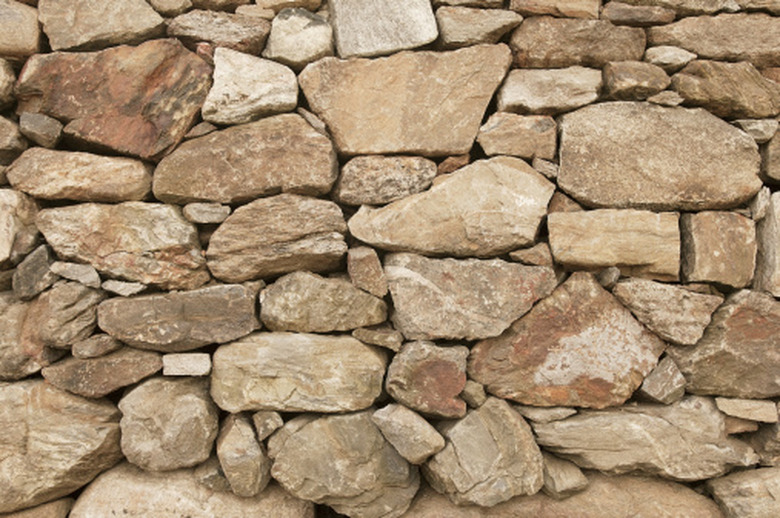How To Calculate Weight Of A Rock
Tip
Make sure to stay consistent in your calculations. If you make your measurements in the metric system, use the corresponding specific gravity figure. Don't mix meters with pounds, as this will skew your calculations.
There are various ways to go about determining the weights of different sized rocks. Smaller rocks can be placed on a scale to find their weight easily. Larger rocks, however, either cannot be moved without heavy machinery or will break a normal household scale. In this case, it is best to measure the dimensions of the rock and calculate the weight using the rock's volume and specific gravity.
Step 1
Measure the length, height and width (depth) of the rock. Depending on the shape of the rock, your measurements might be difficult to take exactly — measure them as closely as you can. Multiply these three numbers together to obtain the volume of the rock.
Step 2
Determine the specific gravity of the rock (if you know what type of rock you're measuring, refer to the chart on the EduMine website for specific gravities of various rock types). If you don't know what kind of rock you're measuring, use the following figures (these are the average specific gravities of most rocks): 2.7 g/cm3 (2,700 kg/m3) or .0975 lbs/in3 (168.55 lbs/ft3).
Step 3
Multiply the volume of the rock by its specific gravity. The resulting number is the weight of the rock. Keep in mind that this figure will be an approximation if the rock that you're measuring is irregularly shaped.
